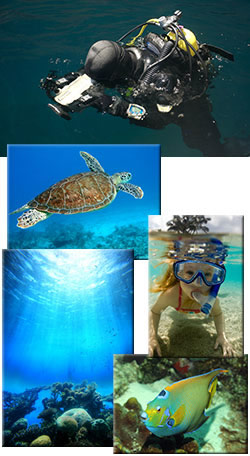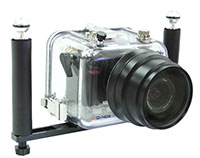Underwater Photography

All around us lies a mysterious and strange world that many of us have never seen. This world is at once familiar and alien, harboring all manner of strange and wonderful creatures. This world is the one beneath the ocean’s surface, and it offers a wealth of opportunities for photographers of all levels.
Taking pictures underwater is a wonderful way for scuba divers and others to share their vision with their family members and friends, but it is important for those would be photographers to be prepared. Underwater photography requires the use of special equipment, and it is important to understand those requirements.
One option for underwater photographers is the purchase of a special waterproof camera. Most major camera manufacturers make at least a few models that are designed for underwater use, and it is a good idea to shop around for the best fit. It is also important to look carefully at each model’s underwater rating and ensure that it will be waterproof to the depths desired.

The other option for underwater photography is to simply place an existing film or digital camera into a watertight housing. Using a watertight housing carries a number of important advantages, including eliminating the need to purchase a special camera just for underwater use. This option also allows the photographer to take advantage of the built in features their land use camera may include, including zoom, flash and other capabilities.
In addition, using a watertight housing for a traditional camera allows the underwater photographer to use all of his or her lenses without incurring additional costs. For the most part, of course, underwater photography will use either a wide angle or macro lens. These lenses allow the close focus required for those stunning photos of fish and other residents of the deep.
While there may be some reasons to use film cameras with a watertight housing, most underwater enthusiasts will opt for the simplicity of a digital model. One of the most significant advantages of digital is the fact that a digital media card can hold literally hundreds of prints, while a film camera will typically be limited to 36 shots. In addition, it will be impossible to change the film while underwater, resulting in lots of time consuming trips to the surface to change film. By shooting with a digital camera the photographer can remain where the action is without missing a beat.
Of course no technology is perfect, and watertight housings are not without their drawbacks. One of the most significant disadvantages of using such a housing is that the resulting refraction can cause the image to be distorted. When shopping for a watertight camera casing it is important to look for one with a fisheye port. This fisheye port is designed to correct any distortion by eliminating the refraction that would otherwise occur.
In addition, some digital cameras will not have a built in length wide enough to capture those beautiful underwater landscapes. In order to overcome this problem many makers of underwater casings include supplementary optics to provide a wider angle of view. This wide angle option is another important feature to look for, especially if the camera does not include a wide angle option.
Scuba diving can be a very enjoyable hobby, and combining diving with digital photography can make a good thing even better. Underwater photographs help to bring the splendor of the ocean to life, providing a permanent reminder of every spectacular dive.